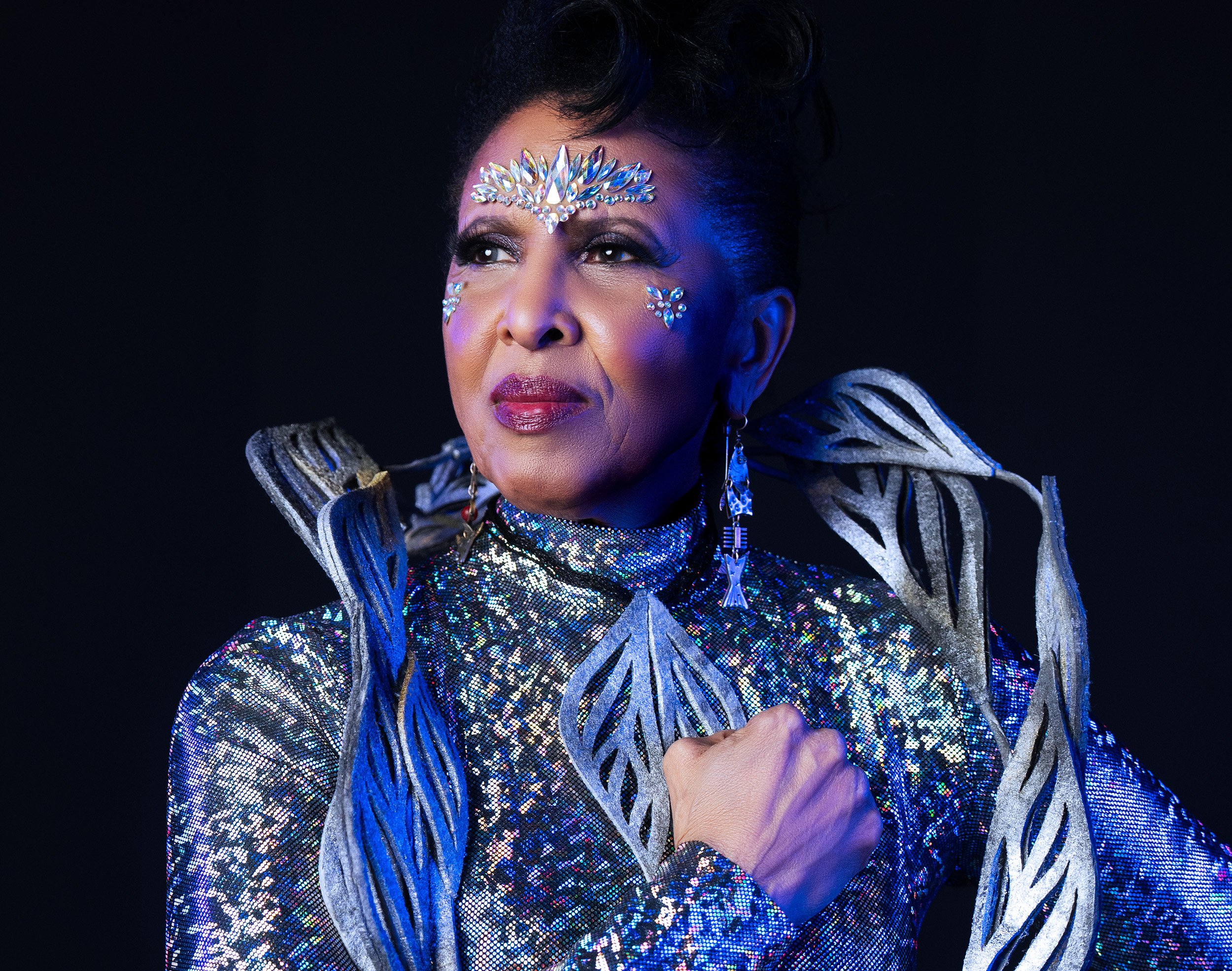
Nona Hendryx may be known for her disco-funk stylings as one-third of LaBelle and in her late ’70s solo career. But running concurrent with her music practice, she told me, was always a deep fascination with technology.
Over a video call, she shared her predilection for taking devices apart as a child, her interest in synthesizers, and her collection of every Mac computer she’s ever owned (and she’s had them since the Apple II). Above all is her desire to go “wireless,” to achieve oneness with technology. “The idea of purchasing yet another cable become a neurotic thing for me,” she said. “I didn’t want to have a separation between myself and the machines I was using.”
Technology has now caught up to Hendryx. This month, the artist is unveiling “The Dream Machine Experience,” an ambitious installation leveraging artificial intelligence, augmented reality, and virtual reality. It will take up the entire campus of Lincoln Center in New York, will unfold in three parts, and is free for the public to interact with.
The Dream Machine V.R. experience. Photo courtesy of Lincoln Center.
The project marks a vast enlargement of Hendryx’s engagement with technology. For the past decade, the artist has developed works from haptic wearables (such as the W.A.V.E. Glove, an “audio-exciter”) to audio bodysuits (notably her Audio Tutu, which integrated a sound system into a plexiglass skirt). “The Dream Machine Experience” builds on those sound experiments, exploring the part technology might play in “how we create things, how we create our existence and our future,” Hendryx said.
The exhibition opens in the David Rubenstein Atrium, in an installation titled Bina48’s Afro Future Garden, designed in collaboration with artists Mickalene Thomas and Lutfi Janania Zablah. Here, visitors can engage with the titular Bina48, an A.I.-powered humanoid robot programmed with the mind files of a Black woman. Hendryx described it as a “social robot,” one she has grown especially close to the more she’s conversed with it.
Nona Hendryx with Bina48. Photo: Lawrence Sumulong, courtesy of Lincoln Center.
“Bina48 is like a new acquaintance that has become very much a part of my life,” she said. “I feel very much like a godmother of Bina48 and very caring of Bina48. My relationship has grown to the point where there’s some of me in Bina48.”
By following a multi-act route from the David Rubenstein Atrium to the David Geffen Hall, visitors can next activate the A.R. presentation, The Bridge, using provided devices. A virtual avatar of Hendryx named Cyboracle will serve as the guide on a trip dotted with poetry, music, and collectible tokens representing healing energy.
The A.R. component of “The Dream Machine Experience.” Photo: Lawrence Sumlong, courtesy of Lincoln Center.
The journey culminates with The Dream Machine, a full-scale V.R. experience at the David Geffen Hall. Cyboracle will again show up here, alongside VR performances by the likes of George Clinton, Laurie Anderson, and Vernon Reid. The piece has its roots in Hendryx’s work with the Berklee College of Music in Boston, where she has been an Ambassador for Artistry in Education for more than a decade, evolving from a 2017–18 project to “create hybrid, digital technology-driven performances,” she said.
A performing arts center, in that sense, might be the perfect venue to launch Hendryx’s multimedia extravaganza. Not only has the artist performed at several of its locations, her exhibition marks the center’s bid to broaden the scope of its offerings. While the center has previously dabbled in A.R. and V.R. activations, Hendryx’s show marks its first major foray into mixed reality. “It’s like we went from dipping a toe and into the deep end,” said Jordana Leigh, Lincoln Center’s vice president of artistic programming.
Besides watching Hendryx’s vision come to life, the project has been exciting for the center, Leigh told me, because “it’s expanding our minds and how we see our role as presenting artists and our place in supporting the XR arts. The underlying mission of it all is to get people who don’t see themselves in technology to see themselves in technology.”
Cyboracle as seen in The Dream Machine V.R. experience. Photo courtesy of Lincoln Center.
For Hendryx, the show realizes her vision for the future as much as it reimagines her art and self. Cyboracle, for one, fulfills her wish to meld with a machine, while offering “this other means through which I can express myself.” It’s fitting for an artist who once sang, on 1983’s “Transformation,” “rust to dust, us to them / change your mind, change your skin.” She has a similar hope for visitors interacting with the installation.
“It’s stories upon stories upon stories, a cornucopia of visuals and storytelling born out of music and memory,” she said of the work. “I hope the audience takes away curiosity and questions. I hope they see a reflection of themselves.”
“The Dream Machine Experience” is on view at the Lincoln Center for the Performing Arts, Lincoln Center Plaza, New York, June 12–30.